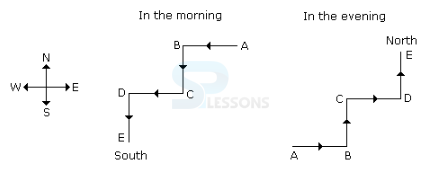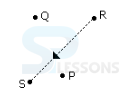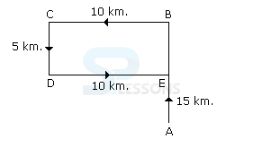 Introduction
Introduction
Scheme of Main Examination for recruitment to the post of Assistant Administrative Officers (AAOs) - Rajbhasha in LIC is as follows:
- Main examination will consist of objective tests for 300 marks and descriptive test for 25 marks.
- Both the objective and descriptive tests will be online.
- The objective test will have separate timing for every section.
- Candidates will have to answer descriptive test by typing on the computer.
- Descriptive test will be administered immediately after the completion of the objective test.
 Pattern
Pattern
| Name of the tests | Number of Questions | Maximum Marks | Medium of Exam | Minimum Qualifying Marks | Duration | |
|---|---|---|---|---|---|---|
| SC/ST | Others | |||||
| Reasoning Ability | 30 | 90 | English & Hindi | 40 | 45 | 40 minutes |
| General Knowledge, Current Affairs | 30 | 60 | English & Hindi | 27 | 30 | 20 minutes |
| Professional knowledge | 30 | 90 | English & Hindi | 40 | 45 | 40 minutes |
| Insurance and Financial Market Awareness | 30 | 60 | English & Hindi | 27 | 30 | 20 minutes |
| Total | 120 | 300 | 2 hour | Knowledge of Language (Descriptive) | 2 | 25 | English & Hindi | 9 | 10 | 30 minutes |
- Knowledge of Language test will be of qualifying nature and the marks thereof will not be counted for ranking.
 Syllabus
Syllabus
[Click Here] for LIC AAO Rajbhasha Reasoning Ability Syllabus.
 Samples
Samples
Number Series
1. Look at this series: 7, 10, 8, 11, 9, 12, ... What number should come next?
- A. 7
B. 10
C. 12
D. 13
- A. 20
B. 22
C. 23
D. 26
- A. 14
B. 15
C. 21
D. 23
- A. 15
B. 14
C. 13
D. 12
- A. 4.2
B. 4.4
C. 4.7
D. 5.1
- A. RIDTCENOJ
B. SIDTCENOI
C. RIDTCENOI
D. RIETCENOI
- A. EOHYZJBB
B. FOIYZJBB
C. FOHYZJBB
- A. EDRIRL
B. DCQHQK
C. DEQJQM
D. FYOBOC
- A. DHFTCHS
B. HGTIRDM
C. ENIHCAM
D. HGRMSCH
- A. CAKNCA
B. HAKNCA
C. CBKNCA
D. CALNCA
- A. 1
B. 2
C. 3
D. 4
E. 5
- A. 1
B. 2
C. 3
D. 4
E. 5
- A. 1
B. 2
C. 3
D. 4
E. 5
- A. 1
B. 2
C. 3
D. 4
E. 5
- A. 3
B. 4
C. 5
D. 6
E. 7
- A. One
B. Two
C. Three
D. Four
E. None of these
- A. 2
B. 3
C. 4
D. 5
- A. One
B. Two
C. Three
D. Four
- A. 10
B. 3
C. 2
D. 0
E. None of these
- A. CBT
B. ABR
C. BCT
D. RBB
- A. HZM
B. HCZ
C. ZMH
D. None of these
- A. xpzxx
B. yxyzx
C. yxzpx
D. zyxpy
- A. PIG
B. PET
C. JUF
D. POT
- A. OPKL
B. AYBZ
C. JIRQ
D. LRMS
- A. North or South
B. East or West
C. North or West
D. South or West
- A. 35 m East
B. 35 m North
C. 30 m West
D. 45 m East
- A. West
B. South-West
C. South
D. North-West
- A. 20 km.
B. 30 km.
C. 50 km.
D. 60 km.
- A. East
B. West
C. North
D. South
- A. arrogant
B. humble
C. joyful
D. suspicious
- A. thread
B. button
C. sewing
D. tailor
- A. scarcely
B. impolitely
C. noisily
D. quietly
- A. terrified
B. agitated
C. courageous
D. reckless
- A. teacher
B. student
C. self-respect
D. fish
- A. 425
B. 220
C. 185
D. 255
- A. 32
B. 35
C. 8
D. 24
- A. 4/9
B. 5/4
C. 5/8
D. 2/7
- A. 11
B. 18
C. 20
D. 21
- A. 1956
B. 1599
C. 1965
D. 1596
- A. Brother
B. Uncle
C. Son
D. Data is inadequate
- A. Father
B. Grandfather
C. Uncle
D. Brother-in-law
- A. Mother
B. Grandmother
C. Aunt
D. Data inadequate
- A. Grand son
B. Grand daughter
C. Nephew
D. Data is inadequate
- A. P @ Q $ T # U * W
B. P @ W $ Q * T # U
C. P @ Q $ W * T # U
D. P @ Q $ T # W * U
- A. Ask the media people to come some other day
B. Immediately accept the offer and brief them
C. Get them turned out of your office
D. Ask them to wait and to consult the officials concerned
- A. Ask someone to arrange on the umbrella
B. Stop your address for a while
C. Continue the address without bothering the rain
D. Postpone it for day
- A. The Delphi Technique
B. Out of the box thinking
C. The normal group technique
D. Brain Storming
- A. In an Unplanned Manner
B. Haphazardly
C. Beyond the range for which they are intended
D. Without taking care of other aspects
- A. Encourage others to make Decisions
B. Be ready to try new things
C. Relying solely upon himself/herself
D. Recognize the importance of quality information
- A. 1
B. 2
C. 3
D. 4
- A. 1
B. 2
C. 3
D. 4
- A. 1
B. 2
C. 3
D. 4
- A. 1
B. 2
C. 3
D. 4
- A. 1
B. 2
C. 3
D. 4
- A. Tuesday
B. Thursday
C. Saturday
D. Friday
- A. Tuesday
B. Monday
C. Sunday
D. Saturday
- A. Monday
B. Friday
C. Sunday
D. Tuesday
- A. 144[latex]^{0}[/latex]
B. 150[latex]^{0}[/latex]
C. 168[latex]^{0}[/latex]
D. 180[latex]^{0}[/latex]
- A. 0[latex]^{0}[/latex]
B. 10[latex]^{0}[/latex]
C. 5[latex]^{0}[/latex]
D. 20[latex]^{0}[/latex]
- A. 1 only
B. 1, 2 and 3 only
C. 2 and 3 only
D. 1, 2, 3 and 4
- A. 1 only
B. 1 and 3 only
C. 1, 3 and 4 only
D. 1, 2, 3 and 4
- A. 1 and 3 only
B. 2 and 4 only
C. 3 and 4 only
D. 1 and 4 only
- A. 1 only
B. 2 only
C. 1 and 3 only
D. 1, 2, 3 and 4 only
- A. 1 only
B. 2 only
C. 3 only
D. 4 only

























